QUANT: A Bet on Interoperability

Disclaimer: Your capital is at risk. This is not investment advice.
Token Takeaway: QNT Token;
Quant is unique from other crypto projects as it doesn’t have a blockchain but a blockchain operating system called Overledger. The team endeavours to construct a platform where any individual or institution can utilise the Overledger to build applications and interact with multiple networks simultaneously. This article will analyse the Quant Network, its significance in the space, and the native token, QNT.
Overview
The Quant Network is a platform that offers interconnectivity among public blockchains and private networks. More specifically, blockchains will be able to connect to the private networks of TradFi and other traditional companies. It uses Overledger, a blockchain operating system (OS), to provide communication between multiple chains without compromising its features, security, or performance by leveraging Distributed Ledger Technology (DLT). DLT is a process where transactions (data) are stored in multiple locations simultaneously in a decentralised manner. Overledger also provides a platform to deploy so-called Multichain Applications (mApps), which can simultaneously function on multiple chains. It supports public chains like Ethereum, Bitcoin, Binance chain, Ripple, and Stellar, and permissioned networks like JP Morgan’s Quorum blockchain and Hyperledger Fabric blockchain.
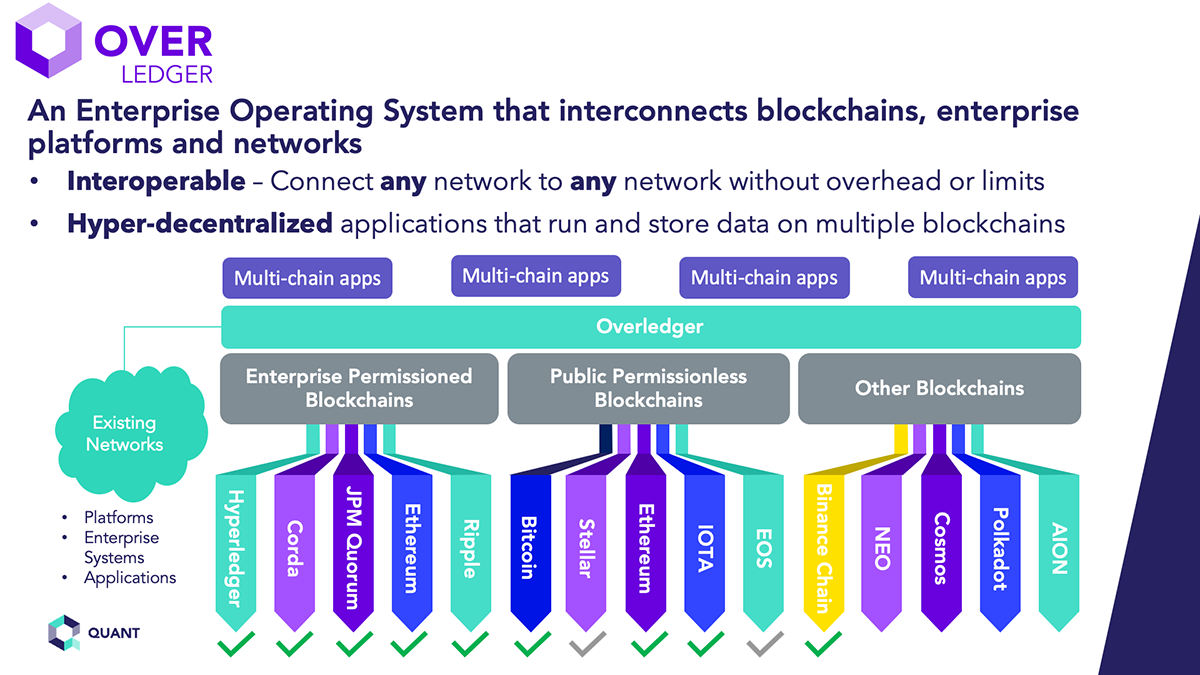
Overledger is the world’s first blockchain OS, providing interoperability among blockchains without needing additional infrastructure. In essence, someone can build an application on Ethereum, which uses XLM for payments, BitTorrent for data storage, and Hyperledger Fabric for internal processes, while also connecting to JP Morgan’s private blockchain for payments processing. Moreover, it also provides smart-contract interoperability and smart contract capabilities for non-smart contract blockchains.
The Quant Network is a pioneer in the crypto space, and with a $1.5bn marketcap, it has remained the market leader in the interoperability coin sector. Their future plans include building an “Ecosystem of Ecosystems” via a fully developed blockchain OS, which can offer similar services to Apple’s macOS, Windows, and Linux, by using DLT.
Why Is Interoperability Essential?
The blockchain space has evolved significantly over the years. With at least 1,000 blockchains and over 20,000 crypto assets, it also brings in the issue of interoperability. Every blockchain is built differently and offers different features. Without direct interoperability, developers are faced with adding a consensus layer to enable blockchain intercommunication, which requires a lot of effort and resources.
Without the proper resources, users or enterprises may have to compromise on many features if they build applications on a single-ledger-dependent platform. For example, someone can build a secure dApp on the Bitcoin Network but would have to compromise on scalability and throughput. Similarly, someone else can build a dApp on Ethereum, benefitting from its vast ecosystem, but would need to accept high fees and network congestion. Quant, with the help of Overledger, is trying to solve this problem by offering a platform where user applications can interoperate among blockchains and leverage their best features.
From an institutional perspective, applications that are single-ledger-dependent may force enterprises to carry additional risks due to not being able to swap or leverage multiple ledgers that serve as a better fit for purpose in the current market without extensively burning resources. Having limitations around scalability and future-proofing is one of the factors that would contribute to slower mass adoption of blockchain and DLT among individuals and institutions.
Key Features and Fees
Quant focuses on eliminating the barriers to interoperability and scalability among blockchains. To achieve such functionality, it has been designed in four layers:
- The Transaction Layer handles adding, queuing and storing network transactions.
- The Messaging Layer handles relevant information (messages) that has been received from the ledger.
- The Filtering and Ordering Layer sorts the data according to specific searches.
- The Application Layer manages the valid messages according to the requested signatures from the list of application requests.
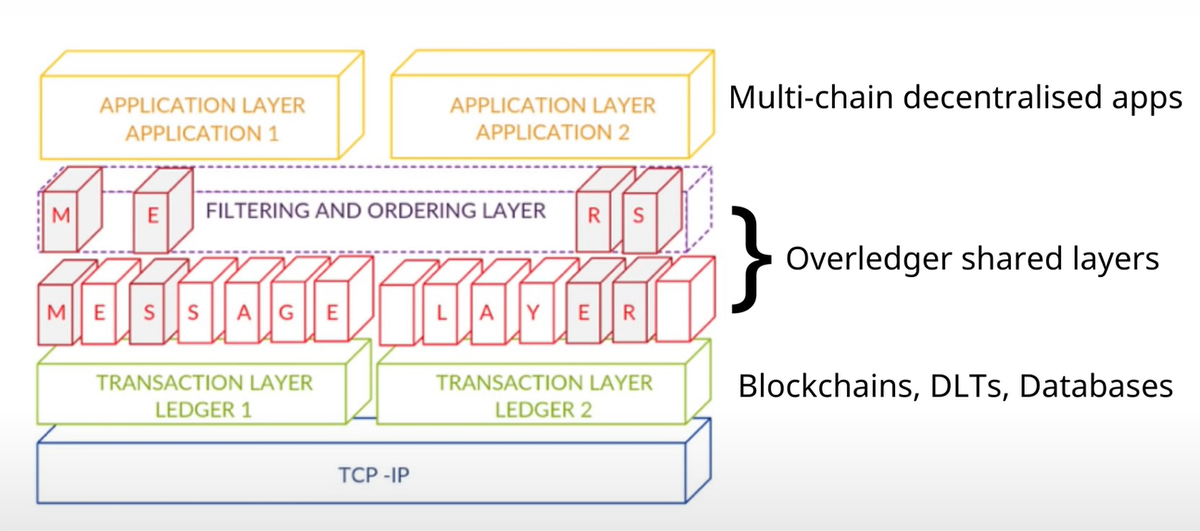
Quant Network can also be seen as a business where enterprise clients and users must pay the platform fees, such as annual licenses (since most of its technology is patented), to be able to use the platform and services.
Additionally, Quant offers many services to enterprise and individual clients, including better payment solutions with digital currencies, supply chain and finance solutions, compliance and insurance, all with the help of DLT. Enterprises can also connect their private permissioned networks with public blockchains by using their built-in zero-knowledge proof technology.
Launch and Tokenomics
QNT, an ERC-20 token native to the Quant ecosystem, was launched via an ICO in March 2018. According to ICO Drops, the goal for the ICO was to raise $36.9m, but only raised $11m in ETH. The unsold tokens were burned, bringing the current circulation supply to around 12 million QNT, with a max supply (hard cap) of 14.6 million. Due to less capital raised in the ICO, the project has also raised money through two undisclosed seed funding rounds led by Tech Nation and Alpha Sigma Capital in 2019 and 2022, respectively. Moreover, companies like Oracle and Lorca have also invested into Quant.
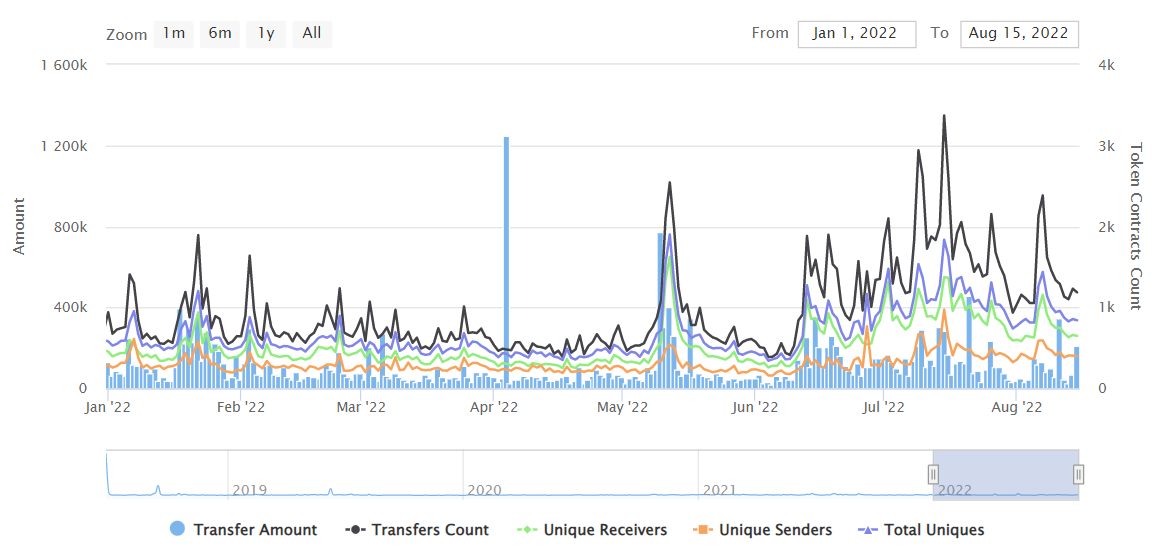
QNT is the utility token of the Quant ecosystem. Since most of the technology is patented, QNT has multiple use cases on the network, from platform and transaction fees to licenses. We covered this in our first article on Quant Network, so I won’t go into further details here.
Additionally, gateway operators have to lock up (stake) QNT in order to process requests within the Overledger network. If the operator processes faulty or malicious data, the locked amount gets slashed as a punishment. While the right work gets incentivised, the operators can also increase their stake with the treasury to have a competitive and algorithmic advantage to process more requests.
Future Outlook
The Quant ecosystem is getting ready to be an essential force in the future of blockchain evolution. In emerging sectors like the Metaverse and digital payments (commercial stablecoins, CBDCs), Quant is trying to solve one of the main issues, i.e. scalability through interoperability. Currently, 105 countries are exploring CBDCs, up from 35 in 2020. By using Overledger, these CBDCs can function on multiple chains while also fulfilling the traditional standards and functionality. Specifically, the Quant Network has collaborated with the Digital Pound Foundation (DPF), an organisation overseeing the making of the digital pound (dGBP). Overledger will allow dGBP to interoperate among multiple blockchains and permissioned networks while also enabling functionality on the traditional payments infrastructure. If all goes well, there is a high chance other countries to follow DPF and use Overledger for interoperability, significantly increasing its demand.
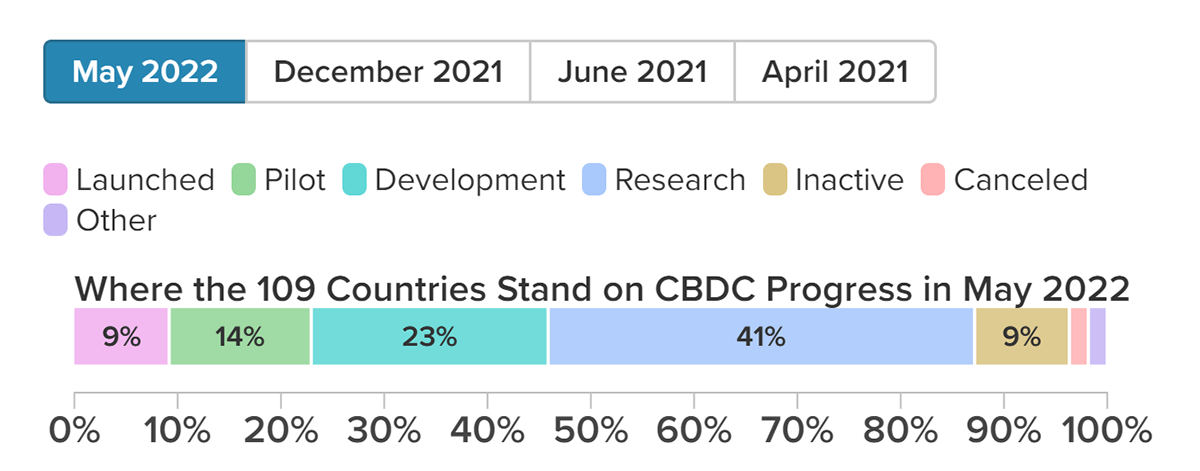
Similarly, this technology allows Metaverse users to interoperate among virtual worlds to transfer data, products, and assets. Additionally, with the Overledger Tokenise API, users can create digital assets like NFTs, which can interoperate among blockchains and Metaverses.
The other thing is regulation, which seems inevitable and could benefit the Quant network by making it sustainable and predictable while adding an extra layer of security for its enterprise clients/partners. With a first-mover advantage and a fully functional blockchain OS, Quant could become the first-choice platform for traditional finance and other institutions.
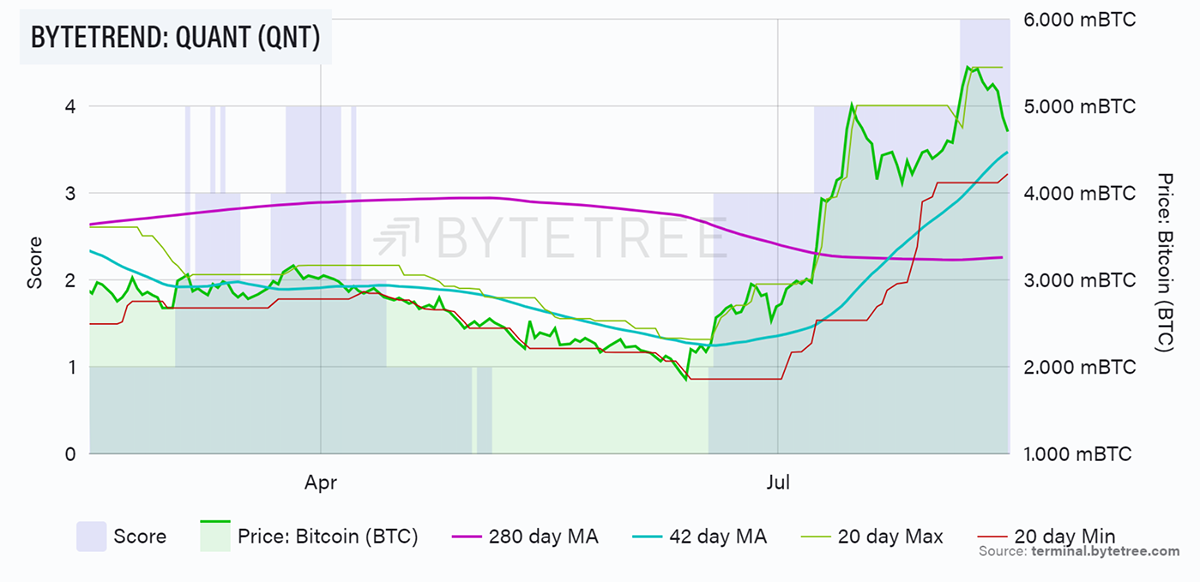
Finally, QNT currently holds a five-star rating on ByteTrend against BTC. This shows a strong price action and a powerful trend against the largest crypto asset.
Conclusion
The Quant Network is a very complex project, and its technology is one of a kind. Although it had a rough start due to a lack of capital, the project has matured a lot since then.
Developers can now leverage the best feature of multiple chains simultaneously without having to build any additional infrastructure. While emerging sectors could also increase the demand for Quant, many users in the crypto space are unaware of the platform, which currently limits its reach. Additionally, the platform is not free, and since it functions like a business, there are multiple fees involved. Clients will also have to pay for annual licenses to use the technology, which could be a barrier to entry.
Supposing that the project stays fundamentally robust and manages to onboard more users, Quant has the advantage in the interconnecting blockchain sector, which will become increasingly more important as the crypto space matures.
